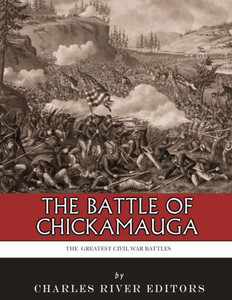*Includes pictures of the battle's important generals. *Includes several maps. *Includes accounts of the fighting written by generals and soldiers. *Includes a Bibliography for further reading. "It was the saddest affair I have witnessed in the war." - Ulysses S. Grant After the last major pitched battle of the Overland Campaign was fought at Cold Harbor in early June, Ulysses S. Grant and the Army of the Potomac nearly captured Richmond in mid-June by stealing a march on Robert E. Lee's Army of Northern Virginia. The fog of war, poor luck, and a skillful impromptu defense by P.G.T. Beauregard stopped Grant from taking Petersburg, which was a critical railroad hub and supply line for Richmond, before Lee's army could confront, thereby saving the Confederacy for the time being. The two armies began to dig in around Petersburg, but at the end of June, Pennsylvania coal miners in the Army of the Potomac came up with an idea. They offered to dig a mine over 500 feet long underneath the lines between the Union and Confederate armies and fill it with gunpowder, which would detonate just 20 feet below where the Confederate soldiers were positioned. Through skillful work, the mine was packed with 8,000 pounds of gunpowder and set to detonate on the morning of July 30. The ensuing explosion would rip a giant hole in the Confederate line, allowing a Union attack to rush through the breached Confederate line and into Petersburg itself. Ulysses S. Grant later said, "Such an opportunity for carrying fortifications I have never seen and do not expect again to have." Sure enough, the detonation of the mine produced one of the most amazing scenes of the entire Civil War. The force of the explosion created a crater that was nearly 200 feet long, 100 feet wide, and 30 feet deep. Remnants of the crater can still be seen today. But through a mix of bad luck, fog of war, and incompetent leadership, the Union assault that followed the explosion was badly bungled. Instead of capturing Petersburg, the Battle of the Crater was a Union debacle that left more than 4,000 Union soldiers killed, wounded, or captured. The Confederates lost about 1,500, with nearly 300 of them being casualties of the initial explosion. The Battle of the Crater didn't help the Confederates much in front of Petersburg, but it remains the most memorable and controversial battle of the entire siege. There were charges that the Confederates slaughtered black soldiers after they had surrendered, and the botched operation cost several Union generals their careers, including one of the most important and controversial generals of the entire Civil War. As Grant noted, it was the Union's last great chance to end the war before they ultimately won in April 1865. The Greatest Civil War Battles: The Battle of the Crater comprehensively covers the events that led up to the crucial battle, the fighting itself, and the aftermath of the battle. Accounts of the fighting by important participants are also included, along with maps and pictures of important people, places, and events. You will learn about the Battle of the Crater like you never have before, in no time at all.
- | Author: Charles River Charles River Editors
- | Publisher: Createspace Independent Publishing Platform
- | Publication Date: Feb 14, 2018
- | Number of Pages: 106 pages
- | Language: English
- | Binding: Paperback
- | ISBN-10: 1985454564
- | ISBN-13: 9781985454569
